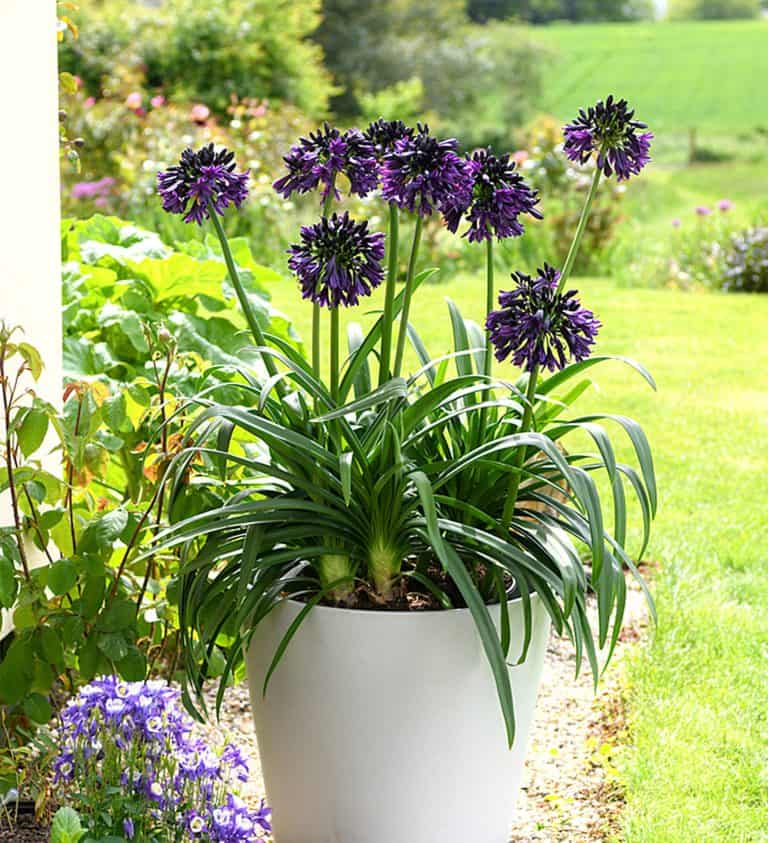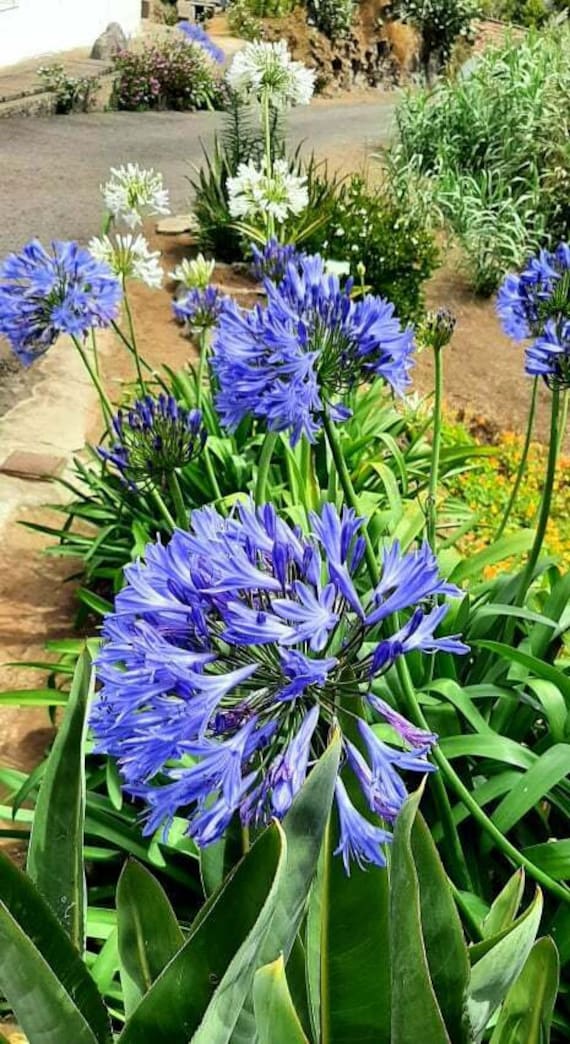Magnificent Agapanthus: Enhancing Your Yard's Charm
Magnificent Agapanthus: Enhancing Your Yard's Charm
Blog Article
Mastering the Art of Agapanthus Care: Necessary Steps for Healthy And Balanced Development and Vivid Blossoms
In the realm of gardening, the cultivation of agapanthus stands as a fulfilling endeavor for those who seek to nurture these classy flowering plants. From selecting the best selection to grasping trimming techniques, the trip in the direction of cultivating prospering agapanthus plants is multifaceted and holds the vital to unlocking the full capacity of these agricultural gems.

Choosing the Right Agapanthus Variety

When picking the appropriate Agapanthus range for your yard, think about elements such as climate viability, bloom color, and growth habit. Agapanthus, frequently referred to as Lily of the Nile or African lily, comes in a variety of colors varying from tones of purple and blue to white. Choose a bloom color that complements your existing garden scheme to develop an unified landscape. Additionally, take into consideration the environment in your region to make sure the Agapanthus range you choose can prosper in your specific problems. Some selections are a lot more forgiving of chilly temperature levels, while others choose warmer environments. Recognizing the growth practice of different Agapanthus ranges is critical for correct positioning within your garden. Some ranges have a clumping development habit, perfect for borders or containers, while others have a more spreading nature, appropriate for ground cover or mass growings. By thoroughly reviewing these factors, you can choose the excellent Agapanthus selection to boost the charm of your garden.
Ideal Growing Problems
Considering the optimum environmental demands is important for successful Agapanthus growing. Agapanthus grows in well-draining dirt with a somewhat acidic to neutral pH level. When planting, select an area that obtains full sunshine to partial color. In hotter climates, supplying some afternoon color can protect against scorching of the fallen leaves. Agapanthus plants are sensitive to cool temperature levels and must be safeguarded from frost throughout cold weather.
To make certain healthy development and dynamic blossoms, plant Agapanthus light bulbs at a deepness of concerning 2-4 inches and area them 8-12 inches apart. Adding natural issue, such as compost, to the soil can improve drain and fertility, advertising durable root development. Mulching around the base of the plants aids preserve wetness and suppresses weed development. Routine watering is essential, especially during the expanding period, to maintain the dirt continually damp yet not saturated.
Watering and Fertilizing Tips
Preserving appropriate wetness levels and supplying necessary nutrients are essential elements in the care regimen for Agapanthus plants. When it comes to sprinkling Agapanthus, it is crucial to strike an equilibrium. These plants choose continually moist dirt however are susceptible to root rot if overwatered.
Feeding published here Agapanthus is vital Going Here for promoting healthy development and respected flowers. Apply a well balanced plant food, such as a 10-10-10 formula, in the very early springtime as brand-new growth arises. Repeat this application every 6-8 weeks throughout the growing period. Prevent excessive fertilization, as it can result in rich vegetation at the cost of blooms. Always adhere to the maker's directions for correct dilution and application approaches. By complying with these watering and feeding tips, you can guarantee your Agapanthus plants grow and create vibrant, long-lasting flowers.
Trimming Strategies for Agapanthus
Trimming Agapanthus plants at the suitable times and with proper techniques is vital for preserving their health and wellness and advertising optimum growth and flowering. The excellent time to prune Agapanthus is in late winter or early springtime prior to brand-new growth arises.
For flowered stems, wait up until the blooms have actually perished and afterwards cut them back to the base. This not only cleans up the plant's appearance yet additionally urges the development of new blossom buds. Deadheading spent flowers can likewise redirect the plant's energy right into generating more blossoms as opposed to setting seeds. Nevertheless, if you want to accumulate seeds for proliferation, leave some blossoms to dry and fully grown on the plant.
Keep in mind to make use of clean, sharp tools to make accurate cuts and lower the danger of introducing conditions. Agapanthus. Regular trimming will assist keep your Agapanthus looking neat and healthy while ensuring a bountiful display of gorgeous flowers
Managing Common Insects and Diseases
After guaranteeing proper pruning techniques for Agapanthus, it is important to attend to common bugs and conditions that can impact the health and wellness and vigor of these plants. Agapanthus plants are generally hardy yet can still come down with certain problems. One common bug that affects Agapanthus is the Agapanthus gall midget. This tiny, orange fly lays its eggs in the foliage, bring about distorted growth and flower buds that fall short to open up. To combat this insect, prune and destroy any kind of afflicted plant parts and take into consideration using insecticidal soap.
Furthermore, Agapanthus plants can endure from root rot if they are grown in poorly draining pipes soil. By being watchful and taking prompt activity versus conditions and bugs, you can aid your Agapanthus plants thrive and generate lively blooms. Agapanthus.

Verdict
In final thought, grasping the art of agapanthus care includes picking the right variety, offering optimal planting conditions, proper watering and feeding, ideal trimming methods, and resolving usual pests and illness. By adhering to these crucial steps, you can make certain healthy development and dynamic blooms for your agapanthus plants. Bear in mind to frequently check and maintain your plants to advertise their total well-being and longevity.
To ensure find out here healthy and balanced development and vibrant blooms, plant Agapanthus light bulbs at a deepness of about 2-4 inches and area them 8-12 inches apart. By adhering to these watering and fertilizing tips, you can guarantee your Agapanthus plants prosper and generate dynamic, long-lasting flowers.
One typical pest that influences Agapanthus is the Agapanthus gall midget. In addition, Agapanthus plants can endure from origin rot if they are planted in badly draining pipes dirt. By adhering to these important actions, you can make sure healthy and balanced development and dynamic blossoms for your agapanthus plants.
Report this page